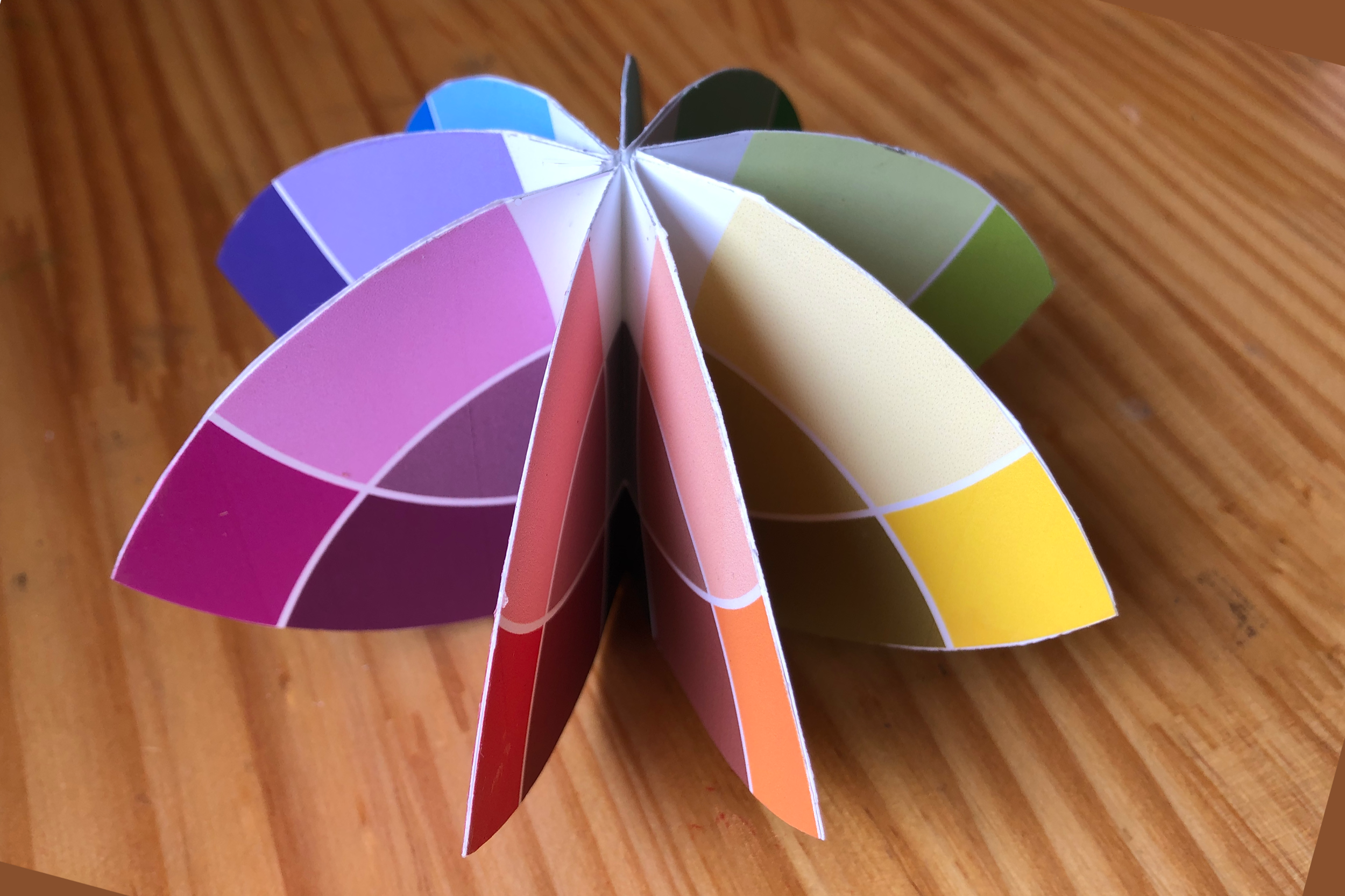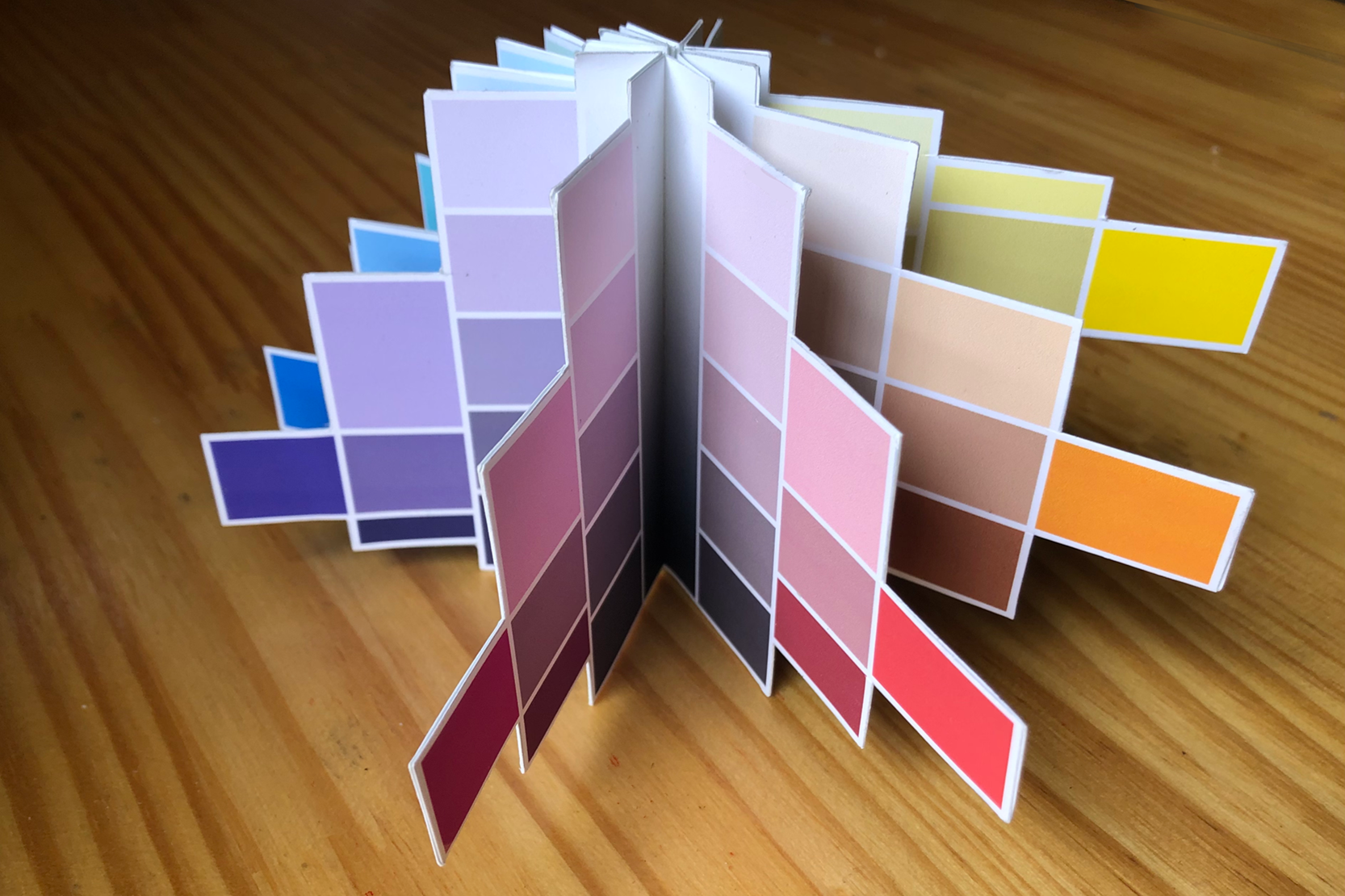Colour organization is 3-dimensional
Ditch those colour wheels! Make 3D colour models instead!
Two-dimensional colour wheels or hue circles are often the first thing we learn about colour (and the only thing we remember as adults). Many people think they are the only way to arrange colours. We learn that mixing paints of the three so-called ‘primary colours’, red, yellow and blue (or maybe cyan, magenta and yellow), will somehow give us all the colours we can see (adding black and white paints to the mix). This is a common misconception, and unfortunately leads to a very limited view of colour.
Colour is complex, and our relationship to colour is filtered by our culture, our experiences and our memories. By reducing our means of dealing with colour to a two-dimensional circle of the most vivid hues, we are missing out on all the nuanced variations which inform how we see and communicate with our world. Most colours we encounter in our everyday lives are not the vivid colours of the hue circle.
Instead, our preferable starting point for exploring and expanding how we experience colour in our world begins with looking, seeing and describing colour in all its variations – vivid, muted, pale and dark. If we take some time to notice and describe the colours we see, with their characters and hue families, we become more attuned to the richness of colour in our world.
If we arrange colours 3-dimensionally, we immediately see all the nuanced variations of colour, which gives us a more realistic and useful view of colour. Colour models are 3D arrangements of hue families, with hues arranged in a natural order, based on the spectrum, connected by the non-spectral magentas and purples. Visualizing colours in 3-dimensions provides a richer and more expansive way of organizing colours, compared to the 2-dimensional hue circle, which only encompasses the most vivid hues.
Describing colour with all its attributes – like hue, lightness/value and chroma – at an early stage of studying colour, ultimately gives us a firmer grasp on understanding our visual world.
When working with 3-dimensional colour models instead of 2-dimensional hue circles, the diversity of colour variations is immediately apparent. 3D models capture a greater reflection of the colours we experience in our everyday lives.







